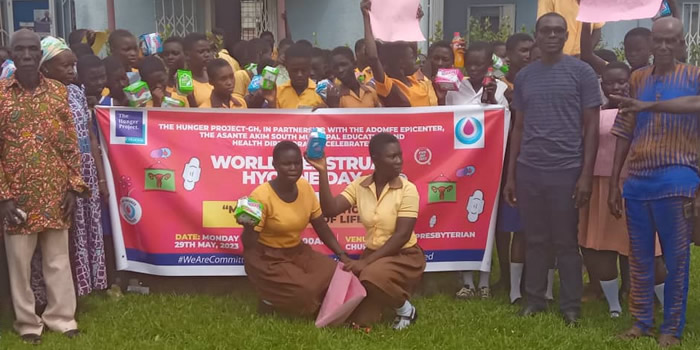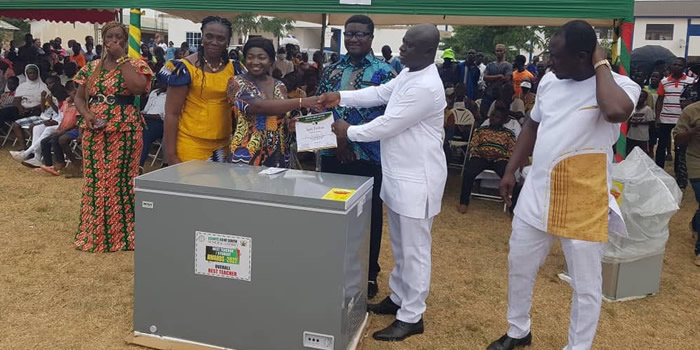

Agriculture continues to play an important role in the economy of the District, providing both full-time and part-time employment for about 80.4% of the total population. About 21,334 people are estimated to be engaged in agriculture.
Most of the farmers are into subsistence farming with a few isolated commercial farms. The farming systems adopted by the farmers include mixed farming, mixed cropping, mono-cropping in the case of tree crops such as coconut, oil palm, rubber, citrus and cocoa.
It is also estimated that 80% of the internally generated funds (IGFs) of the District comes from agriculture and its related activities.
Crop Farming
The total number of people engaged in crop farming in the district is 30024. With this, 3556 are in the urban areas whiles 26468 are in the rural areas. This explains the reason while there are abundant agricultural produce in the district. Measures should be deployed to ensure putting the agricultural produce into secondary use to avoid wastage and also create ready market. Studies have also shown that the majority of the people are into crop farming representing 97.8%. This is followed by fish farming with 42.4% and tree planting with 0.5%.
Livestock and poultry are kept in the backyard as a supplementary source of food and income. As it is the case in most parts of the country, crop farming in the Asante Akim South Munincipal is characterized by rudimentary farming methods and practices. This is evidenced by the techniques employed in land preparation, planting, control of weeds, diseases pests, harvesting, processing and storage.
Incidence of Pests and Diseases
The incidence of disease and pest in a particular farm largely affects the output produced. In the Asante Akim South Municipal, the common crop diseases found in the area include black pod and swollen shoot which affect cocoa, maize smut, cassava mosaic and pests such as termites, maize borers, rodents, nematodes, grass cutters. The incidence of disease and pest is attributed to the fact that most farmers do not have access to technical advice on better farming practices and that they cannot purchase anti pest and disease chemicals. Again the Mass Spraying exercise being implemented by government caters for only cocoa in near neglect for the food crop subsector which is largest in the district.
Livestock Farming
Livestock farming is not developed in the district. Sheep and goats are kept in every village on free range. Because farms are located around the settlements, animals are either tethered or allowed to graze on limited areas around the settlements. The production levels of sheep and goat are low and needs to be improved. Cattle production is also very low. Only few people keep cattle. Animals are kept in kraals during the night and herdsmen follow them to graze during the daytime. Almost every household keep local birds. There are only two small-scale poultry farms in the district. These are inadequate to meet the district’s needs for poultry products. Few pigs, ducks and grass cutters are also kept. The following table shows the different livestock and their average animal per keeper in the district.
Fish Farming (Aquaculture)
There is no functional fishpond in the district. However, there are abandoned fishponds at Morso, Odubi, Juaso, Komeso and other areas. Reasons for the collapse of fish farming in the district include Lack of technical expertise, High production cost, Lack of equipment, Lack of credit facilities. Fish farming needs to be revisited and revamped to improve protein intake.
Tree Planting
Between 2011 and 2013, Ninety-five (95) trees were felled from Off-reserve areas including 12 from Adomfe, 40 from Krofa and 50 from Odubi. Total Volume is 2419.877 cubic meter. About 12 bush fires occurred between 2011 and 2013 especially within Dome River, North and South Fomangso forest reserves. Number of trees of various species planted within the Modified Taunga System between 2011 and 2013 are approximately 1,975,923.
Access to Agric Extension Services and Adoption of Improved Technologies
There are nineteen (19) extension officers within the district, serving eighty nine (89) communities in the district. The extension officer/farmer ratio is 1:3000 in the district. This ratio is far greater than the national ideal ratio of 1:300.
The situation is further aggravated by the lack of accommodation for the officers posted to the district, coupled with inadequate logistics and insufficient allowances. In addition, the poor nature of roads in the district especially during the rainy season, limits their movements. It has also been reported that some farmers are uncooperative. This explains why adoption of improved technologies by farmers is very low (35%).
Type of assistance offered by the extension officers in the district include;
• Seed planting materials production and multiplication techniques
• Post-harvest techniques of grains/legumes and their storage
• Fire belting techniques
• Cocoa and Mango nursery practices and disease control
• Citrus budding techniques
• Safe use of agro-chemicals
• Livestock housing management
• Cocoa nursery techniques and management
• Cocoa nursery techniques and management
• Mistletoe control in cocoa production
• Pruning in cocoa production
• Post-harvest technology
• Farm maintenance
• Row planting
• Vegetable production
• Diseases and pest control in crops
• Land preparation techniques
• Records keeping
Storage/Processing of Agricultural Produce
Apart from Cocoa, which has warehouses built by the GCMB, there are no permanent storage structures for crops. Most farmers do not have any effective means of storing their produce. Storing of produce especially maize and rice in the kitchen is a common practice. Some farmers also store yams in their rooms and others dry pepper for storage. Throughout the district there is not a single silo and therefore it is not surprising that high levels of post-harvest losses in times of bumper harvest are often reported.
Processing of agricultural produce is still on small scale in the district. Processed products include palm oil, palm kennel oil and gari. Table shows the types of agro-processing activities in the district and their location.
Mode of Land Acquisition
Land is vital in the development of agriculture and measures put in place to ensure effective administration of land resources go a long way to ensure agricultural development of a particular district. In a situation where land issues are fraught with problems, it invariably affects agricultural development in the district. Three methods of lane acquisition were identified in the District. These include acquisition through inheritance, rent/leasehold, and abunu/abusa (share cropping) systems. Under the abunu/abusa system of land acquisition, the land is given out after which the proceeds from the land are divided into two or three between the land owner and the farmer.
Problems of Agriculture
The main problems hindering agricultural production in the district can include following;
• Pest and diseases attack
• Lack of readily market for some of the crops e.g. Citrus, plantain
• Inadequate loans in the form of inputs for farmers
• High labour cost
• Lack of storage and processing facilities
• Late release of inputs from government
• Poor road condition
• Lack of standardization in the measurement of produce for sale
Major activities outlined by DADU for implementation to solve these problems include;
• Home and farm visits
• Field work supervision
• Animal health extension and livestock diseases surveillance
• Vaccination of diseases and pests control (CODAPEC)
• Women in Agricultural Development activities (WIAD)
• Field demonstrations
• Veterinary clinic activities
Date Created : 11/23/2017 3:22:20 AM












 facebook
facebook
 twitter
twitter
 Youtube
Youtube
 +233 593 831 280
+233 593 831 280 0800 430 430
0800 430 430 GPS: GE-231-4383
GPS: GE-231-4383 info@ghanadistricts.com
info@ghanadistricts.com Box GP1044, Accra, Ghana
Box GP1044, Accra, Ghana